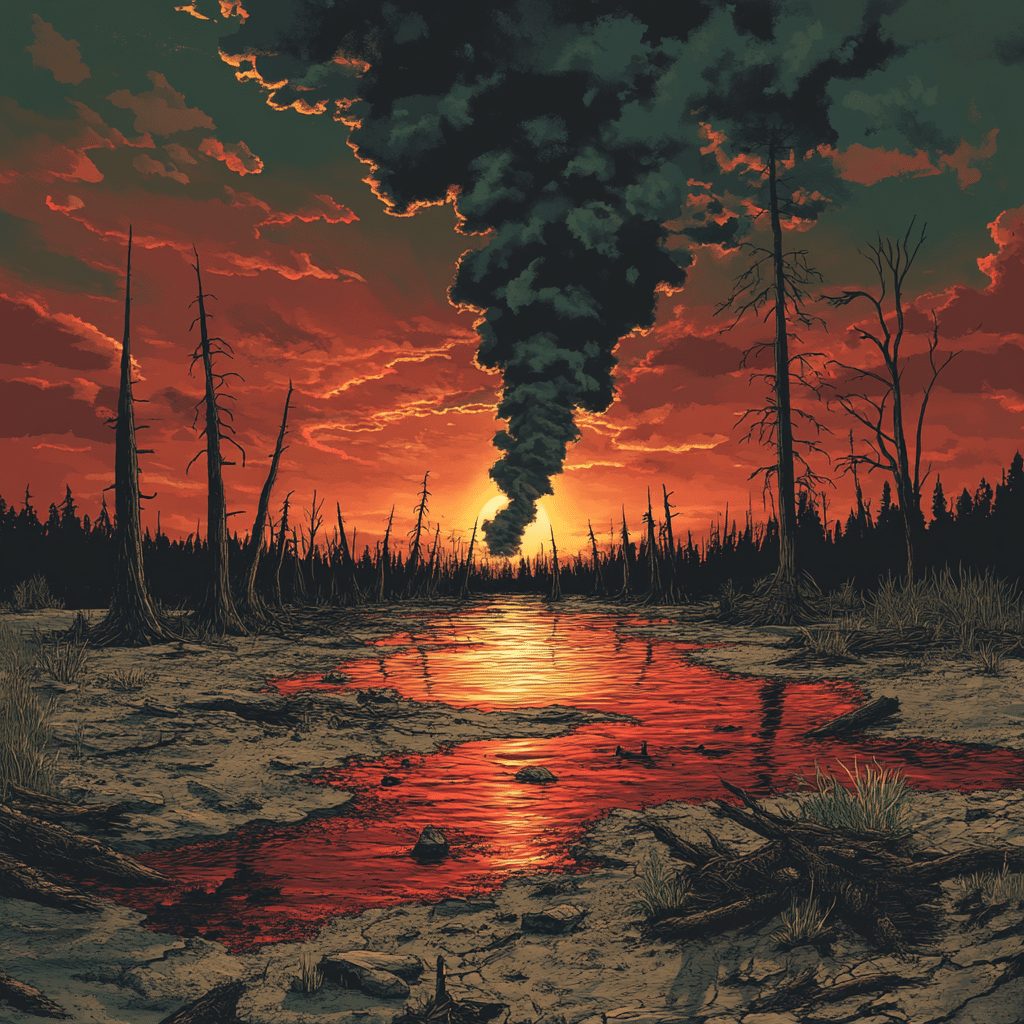The Role of Climate Change Posters in Inspiring Youth Action
Climate change posters have morphed into powerful instruments to rally youth around environmental sustainability. Climate change poster don’t merely serve as artistic mediums for crucial messages. They are pivotal in educating, motivating, and mobilizing children for the environment. In this article, we delve into posters transcending visuals to inspire real action and awareness among younger generations.
The Power and Impact of Climate Change Posters
Climate change posters spark interest and turn abstract climate issues tangible. The eye-catching designs and powerful messages captivate youth, creating a sense of urgency. These posters serve as educational tools, making complex information digestible and memorable.

Iconic Climate Change Posters that Have Defined Movements
Greta Thunberg’s Fridays for Future Campaign
One emblematic climate change poster from recent years ties to Greta Thunberg’s “Fridays for Future” movement. Featuring Greta holding a “School Strike for Climate” sign, this poster symbolizes youth-led climate advocacy. Its simplicity amplifies its urgency, prodding students globally to skip school and demand climate action.
As seen with Greta’s campaign, poignant visuals often resonate deeply. These images drive home the immense responsibility on today’s youth to combat climate change, blending art and activism seamlessly.
Extinction Rebellion’s Bold Statements
Extinction Rebellion ups the ante with striking posters bearing powerful slogans like “Act Now” and “Tell the Truth.” These posters, paired with vibrant graphics and captivating fonts, spark critical climate conversations. Consequently, they lead to an uptick in youth participation in climate protests.
The visual protest technique employed by Extinction Rebellion reaches wide audiences. Their posters, much like the climate change poster movements that came before, prove a picture is worth a thousand words.
National Geographic’s Visual Campaigns
National Geographic’s “Planet or Plastic?” campaign sets a high bar for impactful climate change posters. Combining stunning visuals with urgent messages about plastic pollution’s effects, these posters are both educational aids and calls to action. Through compelling imagery and data, National Geographic captures young minds, inspiring climate-conscious behaviors.
National Geographic’s visual campaigns elevate climate education. The posters’ educational essence equips youth to grasp climate complexities, making tough topics accessible and urgent.
Innovative Approaches in Climate Change Posters
Interactive and Augmented Reality Posters
Technological advancements breed creativity in climate change posters. Interactive posters, featuring Augmented Reality (AR), are gaining traction. Organizations like WWF (World Wildlife Fund) employ AR, enabling students to see melting ice caps or endangered species come to life through smartphones. This method engages the youth viscerally, making climate change’s consequences unavoidable.
AR enriches traditional posters with a layer of interactivity. Its immersive qualities enable young people to witness environmental degradation firsthand, driving home the importance of immediate climate action.
Crowdsourced Designs
Allowing young people to design climate change posters births innovation. The “Global Youth Poster Competition” by the United Nations exemplifies this. Inviting global student participation, it fosters creativity and a sense of ownership in climate discourse. Such initiatives empower youth, reinforcing their active role in environmental advocacy.
Crowdsourcing democratizes climate action. By engaging youths directly in poster design, initiatives breed creativity and ownership in the climate debate, strengthening grassroots environmental movements.

The Role of Social Media in Disseminating Climate Change Posters
Instagram and TikTok Influencers
In today’s digital-first world, social media is essential for spreading climate change messages. Influencers on platforms like Instagram and TikTok, such as Leah Thomas (@Greengirlleah) and Katharine Hayhoe, share climate change posters that often go viral. These posts reach millions, galvanizing a global audience and amplifying protest voices.
Social media influencers significantly enhance poster reach. Their large followings ensure vital climate change messages permeate diverse circles, uniting youth globally in climate action.
Hashtag Campaigns
Hashtag campaigns like #ClimateStrike or #ThereIsNoPlanetB leverage social media to boost climate change posters. These hashtags create galleries of relatable images and messages inspiring youth action. Such campaigns unify global voices, encouraging coordinated climate protests.
Hashtags act as digital rallies. They collect climate change posters under a common banner, simplifying resource access and amplification, fostering global awareness and unity in climate efforts.
Educational Integration of Climate Change Posters
School Curriculums
Incorporating climate change posters in school curricula showcases environmental education’s potential. Posters illustrating scientific concepts, historical contexts of climate activism, and actionable steps for students make learning engaging and effective. This integration sparks early environmental literacy, encouraging lifelong advocacy.
Educational contexts transform posters into potent learning tools. Schools incorporating these into lessons ensure students understand complex climate issues from a young age.
Community Workshops
Community workshops involving climate change poster creation and discussion play a critical role. Hosted by organizations like The Sierra Club, these workshops engage young participants in crafting posters addressing local climate issues. This hands-on approach educates and empowers youth, equipping them to advocate for meaningful change.
Workshops anchor climate action locally. Inviting youth to contribute offers them skills and confidence in environmental advocacy, fostering active participation in broader movements.
A Future Powered by Youth and Climate Change Posters
Moving forward, the fusion of art, technology, and activism in climate change posters will remain essential. Youth engagement with these visual tools speaks volumes about climate advocacy’s future rooted in creativity and passion. The impact of these posters transcends their messages, inspiring unified voices and actions among youth globally.
By harnessing compelling visuals and inclusive platforms, climate change posters will continue to awaken, educate, and mobilize the next generation of environmental stewards. These efforts will drive urgent climate action, promising a brighter, more sustainable future.
Climate change is an imminent threat, but youth-inspired actions, driven by impactful posters, provide hope. As they create and campaign, young people become environmental champions, pushing collective efforts urgently needed for a sustainable world.
Climate Change Poster: Inspiring Youth Action
Creating a climate change poster can be an exciting and educational process, especially for the younger generation. Intriguingly, they often draw inspiration from various sources, such as anti-bullying posters, using impactful visuals and messages. It’s pretty fascinating to see how youth can merge different themes to create something powerful and influential in their fight against climate change.
Creative Inspirations and Surprising Influences
Did you know Raleigh Bacharach, a prominent young environmentalist, often incorporates elements from Biden’s speech today in her posters? Whether quoting specific speeches or drawing parallels between policy and personal action, she ensures that every poster carries a profound message. Additionally, she sometimes intertwines cultural references, such as themes from local communities like the artworks in Thornton Cleveleys, to make the posters more relatable and visually engaging.
Youth-Driven Movements and Their Impact
When diving into the subject of climate change posters, it’s notable how youth movements can shape the conversation. For instance, consider initiatives like Artakeback, combining art and activism to inspire climate action. These movements highlight how creativity and social consciousness can drive substantial change. Have you ever thought about the connection between seemingly unrelated topics, like how the energy and teamwork seen on the Tcu basketball court can mimic the collective action needed in climate advocacy?
Fun Facts and Surprising Trivia
Let’s sprinkle in some trivia! Did you know that the process of determining what clause means in legislative terms is often used by students when formulating the wording for their climate change posters? This practice helps them grasp the intricacies of climate policy. Speaking of intriguing personalities, Barry Gibb’s health journey has, in an odd twist, inspired many young activists to focus on the health impacts of climate change, highlighting how interconnected our ecological and personal well-being are.
In essence, whether drawing from powerful speeches or local art, creating a climate change poster is more than just an act of expression. It’s about embedding layers of influence, collaboration, and education into a format that speaks directly to the heart of the matter.

What are the 5 lines of climate change?
Climate change involves long-term shifts in temperatures and atmospheric patterns, significantly influenced by human activities like burning fossil fuels and deforestation. Its impacts include increasing global temperatures, rising sea levels, extreme weather events, melting ice caps, and changing ecosystems.
What is the best slogan for climate change?
A great slogan for climate change could be “Act Now for a Sustainable Tomorrow” as it highlights the urgent need for action to ensure a better future for generations to come.
What is climate poster?
A climate poster is a visual tool designed to raise awareness about climate change. It uses images, slogans, and facts to educate people on how to take action against climate change and promote sustainable practices.
What is climate change for kids?
For kids, climate change means that the Earth’s weather patterns are becoming different and wonky. This change is mostly because people are using a lot of energy from coal, oil, and gas, which makes Earth warmer.
What are 10 examples of global warming?
Ten examples of global warming include more heatwaves, melting glaciers, stronger hurricanes, rising sea levels, shrinking Arctic ice, warmer oceans, earlier springs, more droughts, shifting wildlife habitats, and wildfires.
What is climate change in 100 words?
Climate change is the long-term alteration of temperature and typical weather patterns in a place. This phenomenon has been driven by human activities, particularly the burning of fossil fuels, which increases greenhouse gases in the atmosphere, leading to global warming.
What is a powerful quote about climate change?
A powerful quote about climate change could be, “The climate is a common good, belonging to all and meant for all.” – Pope Francis
What is the slogan for Save Earth 🌎?
A simple yet effective slogan for saving Earth could be “Protect Our Planet”.
What is a better phrase for climate change?
A better phrase for climate change might be “Climate Crisis” because it captures the urgency and gravity of the situation.
Why is global warming bad?
Global warming is bad because it leads to severe weather events, loss of biodiversity, rising sea levels, and other catastrophic impacts that can disrupt ecosystems and human life.
What are the 10 causes of climate change?
Ten causes of climate change include burning fossil fuels, deforestation, industrial processes, agricultural practices, land use changes, waste production, transportation emissions, power generation, urbanization, and overpopulation.
How can I design a poster?
To design a poster, start with a catchy slogan or message. Use bold images or graphics to draw attention, and keep the text clear and concise. Make sure to include important facts or tips on what people can do to help fight climate change.
What will Earth look like in 100 years?
In 100 years, Earth’s climate could be much warmer with higher sea levels, more frequent and severe weather events, and significant impacts on ecosystems and human societies unless substantial actions are taken to curb climate change now.
Why is it hotter this year?
It’s hotter this year due to the cumulative effect of greenhouse gases trapping more heat in the atmosphere, along with natural climate variability.
Will the Earth cool down again?
The Earth could cool down again, but only if significant global actions are taken to reduce greenhouse gas emissions and if natural cooling processes outpace warming trends.
What are the 5 parts of the climate change?
Long-term climate change involves rising temperatures, shifting weather patterns, extreme weather events, ocean acidification, and loss of biodiversity.
What are the 5 lines on effects of global warming?
The five lines on the effects of global warming are rising sea levels, more intense and frequent heatwaves, severe storms, loss of biodiversity, and agricultural disruption.
What are the 5 main causes of climate change?
The five main causes of climate change are the burning of fossil fuels, deforestation, industrial emissions, agricultural emissions, and waste management.
What are the 5 major components of climate?
The five major components of climate include temperature, precipitation, humidity, atmospheric pressure, and wind patterns.



